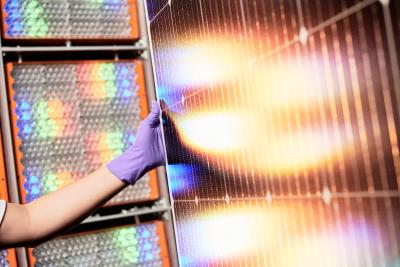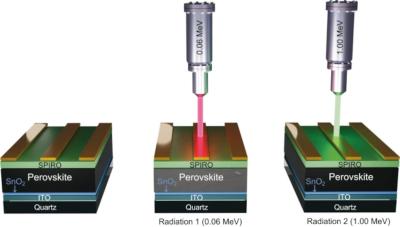Oxford PV and Fraunhofer ISE announce full-sized tandem PV module with 25% efficiency
A research team from the Fraunhofer Institute for Solar Energy Systems ISE has reported a PV module using perovskite silicon tandem solar cells from Oxford PV with an efficiency of 25% and an out-put of 421 watts on an area of 1.68 square meters, stating it is a record efficiency for a silicon perovskite tandem solar module in industrial format.
For the manufacturing process, the researchers used equipment at Fraunhofer ISE's Module-TEC that is already used in mass production and optimized the processes for the tandem technology.




